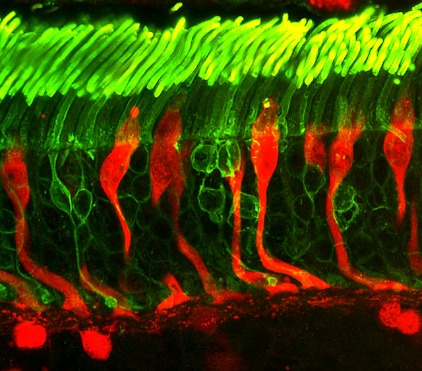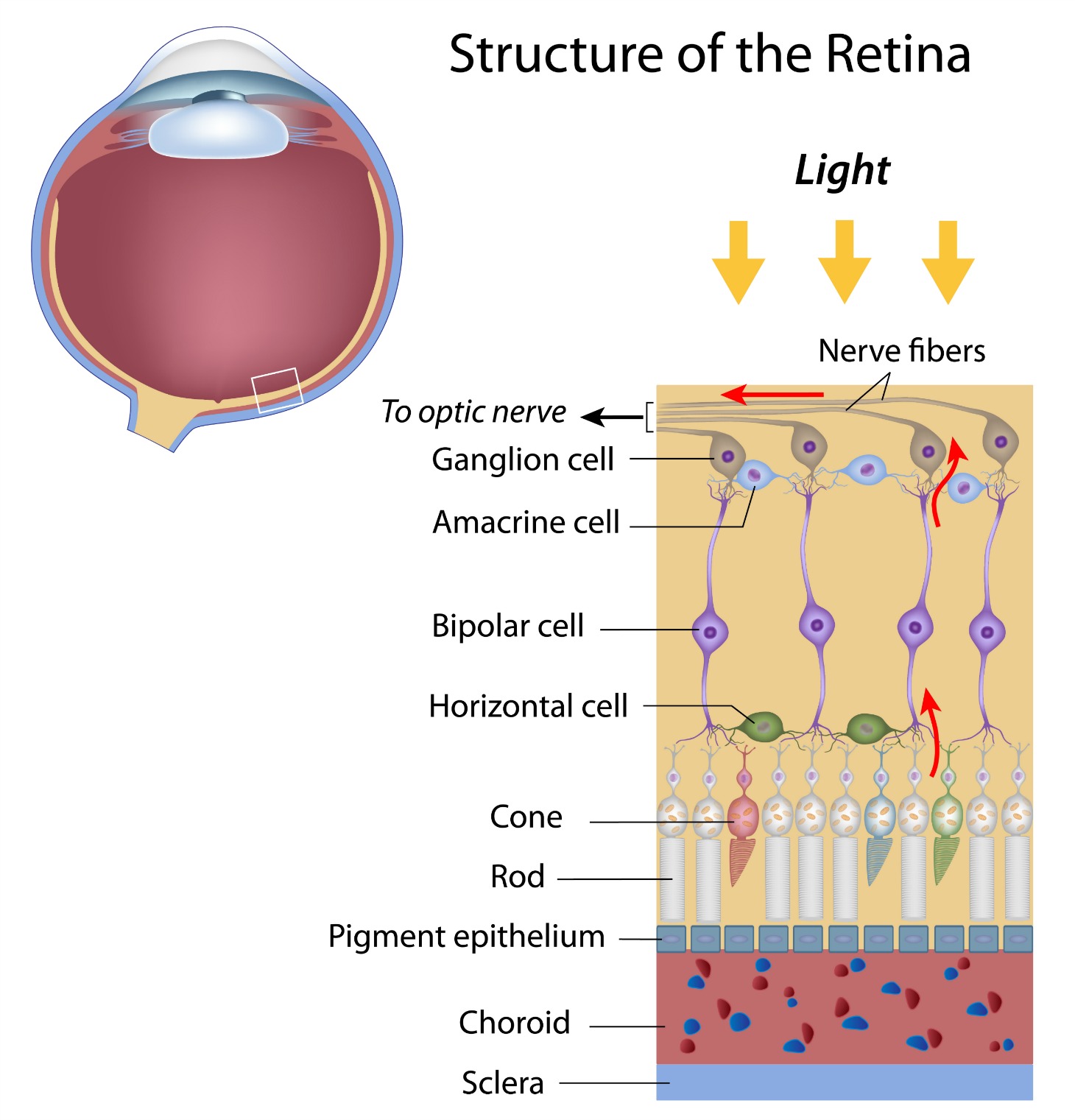Rods and Cones
Rods and cones are specialized cells, called photoreceptor cells, that are found in the retina and are responsible for our vision.
This image from the National Institute of Health "captures the many layers of nerve cells in the retina. The top layer (green) is made up of cells called photoreceptors that convert light into electrical signals to relay to the brain."
Photoreceptor Cells
However, these retinal cells perform different functions making it possible for us to see and to have clear vision during the day and at night. Let me first explain the function these photorecptor cells perform.
Some links in the following sections are eBay or Amazon affiliate links, which means that if you purchase a product through them I receive a small commission. There is no extra cost to you. Find more details on this page.
√ They convert light into electrical messages.
These messages are sent to the optic nerve which then send the message to the brain.
√ Named for their shape
√ Both are found in the retina
Dr. J. D. Solomon, ophthalmologist and author of Overcoming Macular Degeneration: A Guide to Seeing Beyond the CloudsRod Cells
There are many more rods than cone cells in the retina - especially outside the macula. The human eye contains about 130 million rods and about 7 million cones. Rods are:
√ Used for our peripheral vision and are concentrated in the outer edges of the retina.
√ Responsible for our night vision. Rods are needed for the perception of light and darkness and adapting to night time vision
√ Responsible for sensing motion
√ Cannot transmit sharp images or perceive fine detail. Cone cells give us our detailed vision
√ Not sensitive to and cannot perceive color. Cone cells allow us to see in color
√ Many more rod cells than cone cells are found in the retina - especially outside the macula; rod cells predominate our peripheral vision
Cone Cells
√ Are concentrated in the macula
√ Are the only cells found in the fovea
√ Responsible for straight ahead vision
√ Responsible for color perception
Did you know that the macula, the center of the retina responsible for our straight ahead vision, is also responsible for our ability to see colors? Thanks to a heavy concentration of cone cells, colors are vivid and bright.
However, one of the symptoms of macular degeneration is that colors appear faded and less brilliant. This is the result of the cone cells becoming less functional or less abundant. Not only does one find that colors appear more dull, it is also more difficult to distinguish colors such as black from navy blue.
√ Responsible for sharp or detailed vision
√ Less sensitive to light than rod cells
Ophthalmologist, J.D. Solomon explains, "Each of the cones in the fovea connects with one ganglion cell going directly to the brain. In other parts of the retina, each cone or rod connects to many ganglion cells, decreasing its effective output to the brain."
The cone cells are the photoreceptor cells that are most affected by macular degeneration. The breakdown of the surrounding layers of tissue prevents nutrients and oxygen from getting to these cells and from moving built up waste out of the area ...leading to the degeneration or dying of the cells.
Photoreceptors consume a surprising amount of fuel. "They have the highest concentration of mitochondria -- the "furnace" of the cell -- and use more energy than any other cell in the body," says senior investigator Lois Smith, MD, PhD, in Boston Children's Department of Ophthalmology. "They have to be 'on call' all the time to signal light perception and have to recycle their components constantly."
The combined function of rods and cones allows us to have vision across a wide range of lighting conditions, from very dim to very bright, to perceive a wide spectrum of colors and to have a peripheral and central visual field.
Return to Definition of Macular Degeneration
Go from Rods and Cones to WebRN Macular Degeneration Home
√ Prevention of Macular Degeneration?
√ Tips for Daily Living?
√ Food Suggestions for a Macular Degeneration Diet?
√ Ideas on Visual Aids to Maximize your Sight?
If you said "yes" to any of the above, sign up for the monthly Macular Degeneration News.







